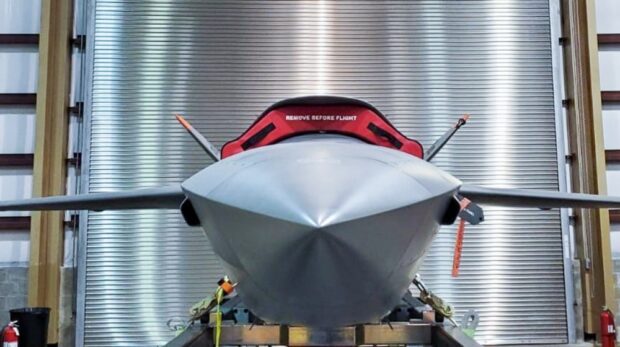The 96th Test Wing acquired its newest aircraft, and along with it, a leading-edge experimentation effort last month. The 40th Flight Test Squadron took possession of the first of two government-owned Kratos XQ‑58A Valkyrie aircraft.
The Valkyrie is a low-cost, high-performance uncrewed air vehicle. It is rocket-launched off a rail system and is controlled from a ground station or airborne fighter. An onboard computer system is capable determining the best flight path and throttle settings to comply with commands.
The Autonomous Aircraft Experimentation team is using the 30-foot long XQ-58A and Eglin range for developmental ground and flight testing.
Because military ownership of the XQ-58A is new, much of the aircraft’s infrastructure and logistics have to be created from the ground up and will be recorded, according to Maj. John Nygard, 40th FLTS AAx team lead.
“When you combine the XQ-58A with the Eglin Range infrastructure, you get an uncrewed aircraft that enables real, open-air test of flight autonomy software capabilities while also proving out the resource requirements that could be used for future combat collaborative aircraft,” Nygard said.
The AAx team will test autonomous aircraft in partnership with the Air Force Research Laboratory Strategic Development Planning and Experimentation office.
“The data generated during previous tests, along with feedback provided from our user community, show that in order to rapidly develop and mature tactical autonomy on an appropriate timeline, investment in, and utilization of, appropriate military range resources is required,”
said Matthew Niemiec, AFRL autonomous aircraft experimentation portfolio lead.
Military range resources are a major reason XQ-58A testing found a home at Eglin. The Eglin Range communications support infrastructure will allow engineers at the ground station in the Central Control Facility to monitor the vehicle’s performance during flight. Additionally, autonomous aircraft operations, airspace, and safety processes have been developed to enable safe and effective flight testing for uncrewed air vehicles. The first flight is scheduled later this month.
Nygard described this new test as time-critical, with a lot to get done in a short amount of time.
“The goal by fall 2023 is to leverage this platform for experimentation with crewed-uncrewed teaming display solutions” said Nygard.
Additionally, the team is building out a data-storage and simulation environment to capture operator feedback and integrate their inputs into the autonomy software development process. The XQ-58A could host a variety of flight autonomy software solutions that were first tested in the simulator, including those from the Skyborg Autonomy Control System and others provided by third-party government and industry partners.
Niemiec said AFRL is working with multiple industry partners to integrate leading-edge autonomy capabilities onto the XQ-58A.
“The simulation investment enables us to focus flight test efforts of XQ-58A on developing the process to deliver autonomy software capable of accomplishing operator-defined missions to the warfighter,” he said.
Source: Press Release

